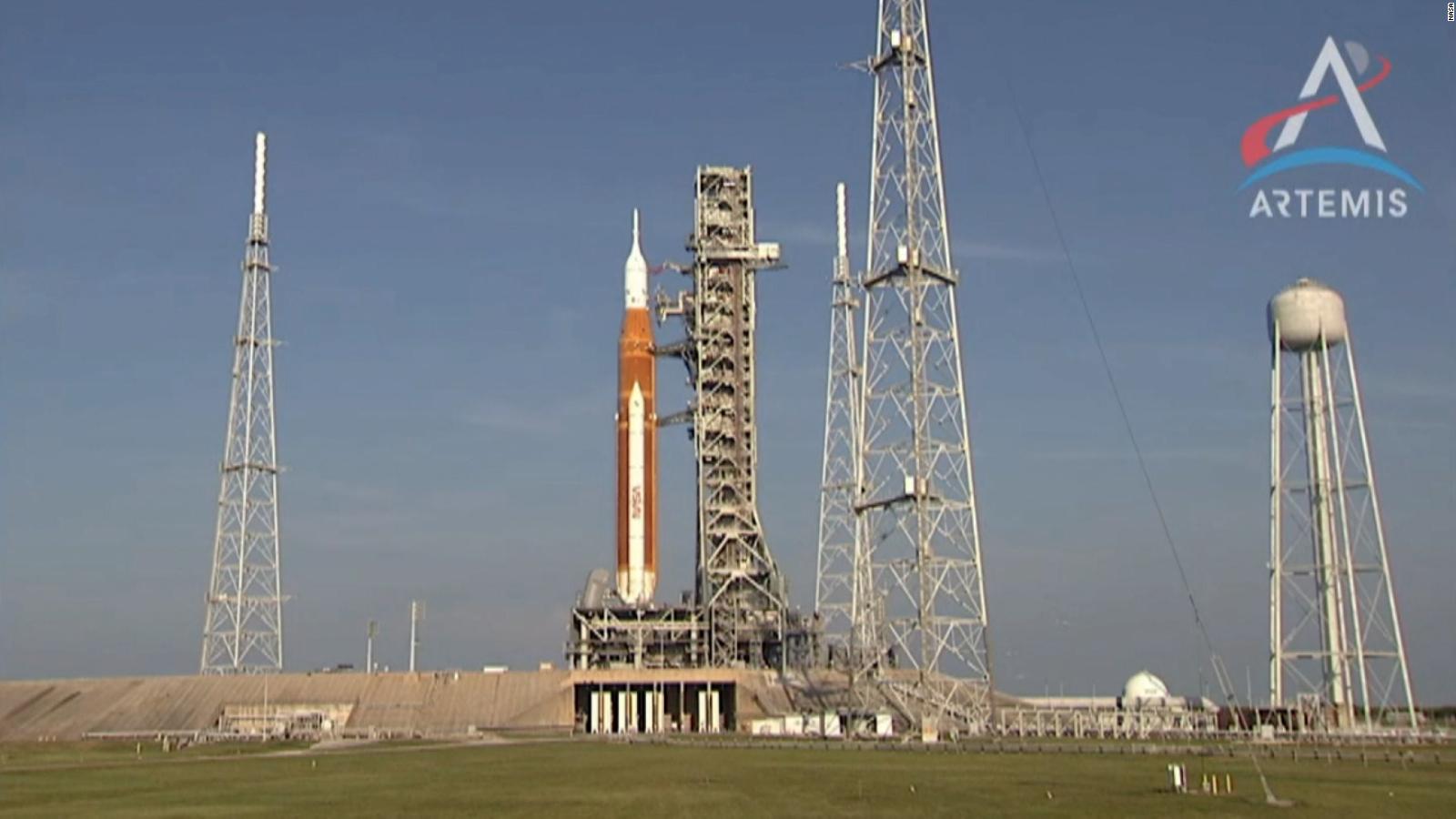Know the origin of the name of NASA's Artemis mission 0:47
(CNN) --
The Artemis I mission is ready for launch.
That's the result of NASA's Flight Readiness Review, which took place on Monday.
The assessment took an in-depth look at the preparation of the 98-meter-tall assembly, which includes the Space Launch System rocket and the Orion spacecraft, which is currently on the launch pad at NASA's Kennedy Space Center in Florida. .
The Artemis team is targeting a first launch window on Monday, August 29 that will span two hours: from 8:33 am ET to 10:33 am ET.
You also have other launch options for September 2 and September 5, if the first alternative fails.
NASA's Lunar Mega Rocket Artemis I Arrives at Launch Pad in Florida
The "OK" in the flight review is a positive sign that things are on track for the mission.
However, there are still factors that could affect the launch of the platform next week, including bad weather.
There are few things left on the to-do list, after previous tests of the rocket on the launch pad.
Precisely, a dress rehearsal with fuel simulated each step of the launch but without taking off.
But there is one missing element that the team will test on launch day, said Mike Sarafin, NASA's Artemis mission manager.
Hydrogen cranking, which is used to thermally condition the engines, was not run during the last fueled dress test.
So now this process is part of the launch countdown.
advertising
This test will be done during a "quiet point" before the final countdown, said Charlie Blackwell-Thompson, launch manager for Artemis I at the Kennedy Space Center.
The rocket and spacecraft assembly arrived at the launch pad on August 17, after a 4-mile trip aboard one of NASA's giant Apollo-era tractors from the Assembly Building at Vehicles.
Just like the shuttle missions and the Apollo Saturn V rockets did in their day.
The uncrewed Artemis I will launch on a mission that will go beyond the Moon and back to Earth.
After launch, the spacecraft will reach a far retrograde orbit around the Moon, traveling 2.1 million kilometers over the course of 42 days.
Artemis I will crash into the Pacific Ocean off the coast of San Diego on October 10.
Orion's return will be faster and hotter than any spacecraft on its way back to Earth.
The Orion spacecraft will travel further than any spacecraft built for humans has ever flown, reaching 40,000 miles beyond the far side of the Moon, according to NASA.
In 3 years astronauts will return to the Moon.
NASA selects 13 viable points for the landing of the Artemis III mission
There are no humans on board, but Orion will carry 54.4 kilograms of memorabilia, including toys, Apollo 11 items and three mannequins.
In the Orion commander's seat will be Commander Moonikin Campos, a suit dummy that can collect data about what future human crews might experience on a trip to the Moon.
The mannequin will be wearing the new Orion Crew Survival System suit, designed for use by astronauts during launch and re-entry.
The suit has two radiation sensors.
This mission will launch NASA's Artemis program, which aims to return humans to the Moon and bring the first woman and first person of color to the lunar surface by 2025. It will also eventually usher in to human exploration of Mars.
Artemis I will also carry out a series of scientific experiments, some of which were installed when the rocket and spacecraft reached the launch pad.
This week, the Artemis team will open Orion's hatch once more to install a Snoopy plush, which will serve as the mission's zero-gravity indicator.
Once the ship reaches the microgravity environment of space, Snoopy will float in the crew capsule.
Bob Cabana, associate administrator at NASA Headquarters in Washington, reflected on the Apollo 13 launch as a young midshipman at the US Naval Academy.
"I never dreamed that I would end up as an astronaut, let alone director of the Kennedy Space Center or in the position that I have now," Cabana said.
"I'm a product of the Apollo generation and look what it did for us. And I can't wait to see what comes out of the Artemis generation because I think it's going to inspire even more than Apollo ever did. It's been gratifying to be able to see all that work during today's review and knowing that we're prepared to do it.
ArtemisMoonNASA

